Archives
- 2018-07
- 2018-10
- 2018-11
- 2019-04
- 2019-05
- 2019-06
- 2019-07
- 2019-08
- 2019-09
- 2019-10
- 2019-11
- 2019-12
- 2020-01
- 2020-02
- 2020-03
- 2020-04
- 2020-05
- 2020-06
- 2020-07
- 2020-08
- 2020-09
- 2020-10
- 2020-11
- 2020-12
- 2021-01
- 2021-02
- 2021-03
- 2021-04
- 2021-05
- 2021-06
- 2021-07
- 2021-08
- 2021-09
- 2021-10
- 2021-11
- 2021-12
- 2022-01
- 2022-02
- 2022-03
- 2022-04
- 2022-05
- 2022-06
- 2022-07
- 2022-08
- 2022-09
- 2022-10
- 2022-11
- 2022-12
- 2023-01
- 2023-02
- 2023-03
- 2023-04
- 2023-05
- 2023-06
- 2023-07
- 2023-08
- 2023-09
- 2023-10
- 2023-11
- 2023-12
- 2024-01
- 2024-02
- 2024-03
- 2024-04
- 2024-05
- 2024-06
- 2024-07
- 2024-08
- 2024-09
- 2024-10
- 2024-11
- 2024-12
- 2025-01
- 2025-02
- 2025-03
-
sphk The primary physiological role of the HO system
2022-06-20
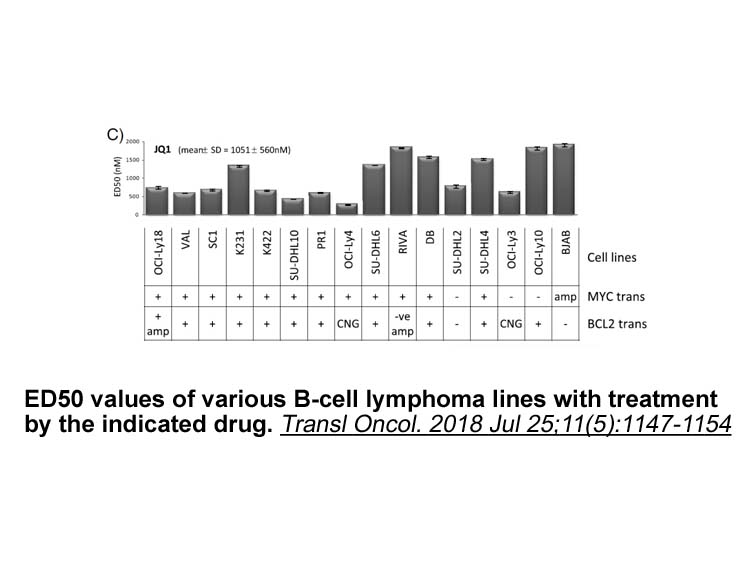
The primary physiological role of the HO system is the protection of sphk from oxidative stress. These cytoprotective effects are attributable both to the degradation of the pro-oxidant heme and to the positive contribution of the metabolites produced during this degradation, namely CO, BV, and BR.
-
Of xenobiotic quinones thymoquinone methyl isopropyl benzoqu
2022-06-20
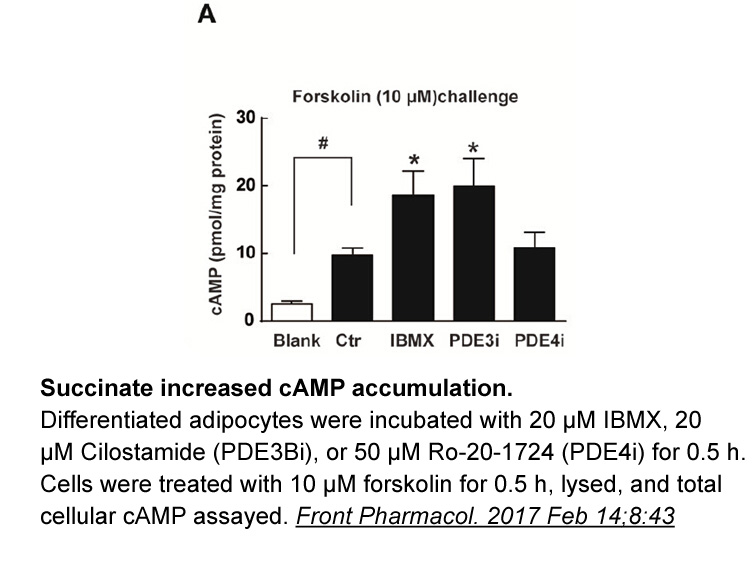
Of xenobiotic quinones, thymoquinone (2-methyl-5-isopropyl-1,4-benzoquinone; Fig. 1) is one of the most thoroughly studied for its pharmacological properties. It is the most active component of Nigella sativa, commonly called black cumin2, 3, the essential oil of the seeds of which are used for trea
-
Accessibility and physico chemical features of cysteine resi
2022-06-20
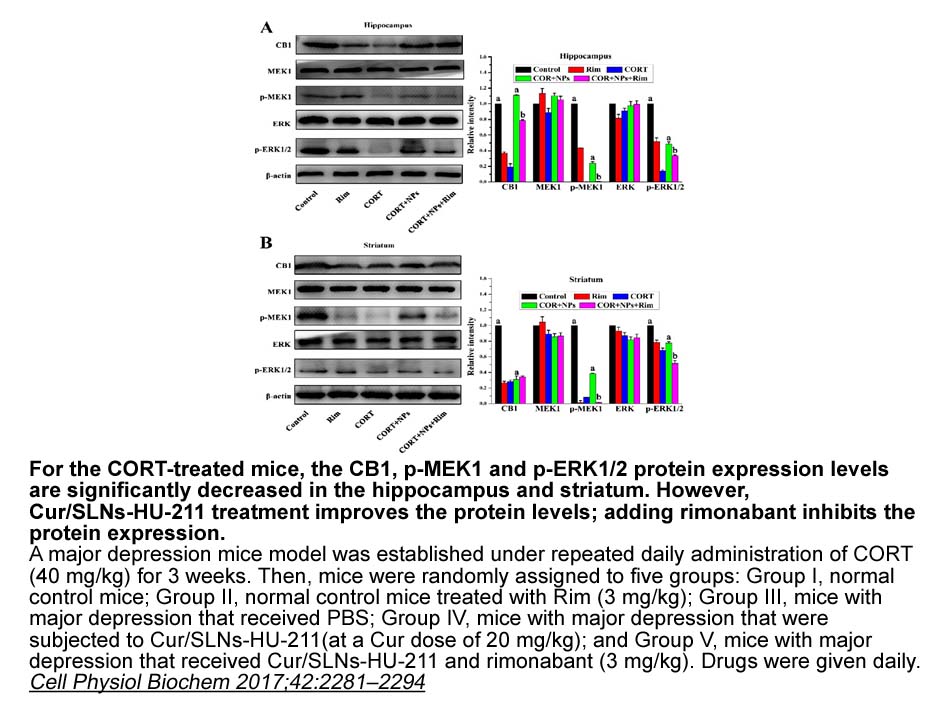
Accessibility and physico-chemical features of cysteine residues define their redox-reactivity and the 3-dimensional structure of GSNOR allows to identifying such surface-exposed, redox-sensitive cysteine residues. GSNOR crystal structures are available from human (Protein Data Bank code: 1MP0), tom
-
br Methods br Transfollicular penetration of
2022-06-20
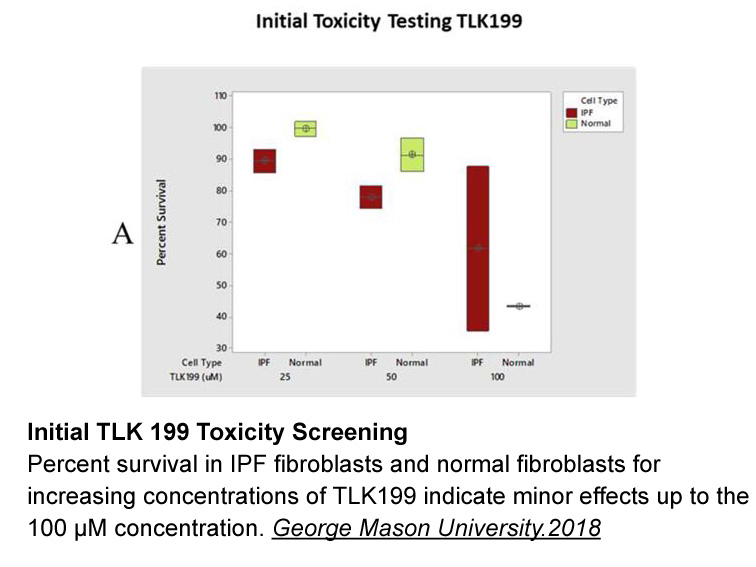
Methods Transfollicular penetration of herbs and their active constituents used for hair loss treatment The transfollicular administration of pharmacologically active molecules is recognised as a significant element for therapeutic interest, mainly with regard to delivery to specific sites of
-
Currently ursodeoxycholic acid UDCA is the only recommended
2022-06-20
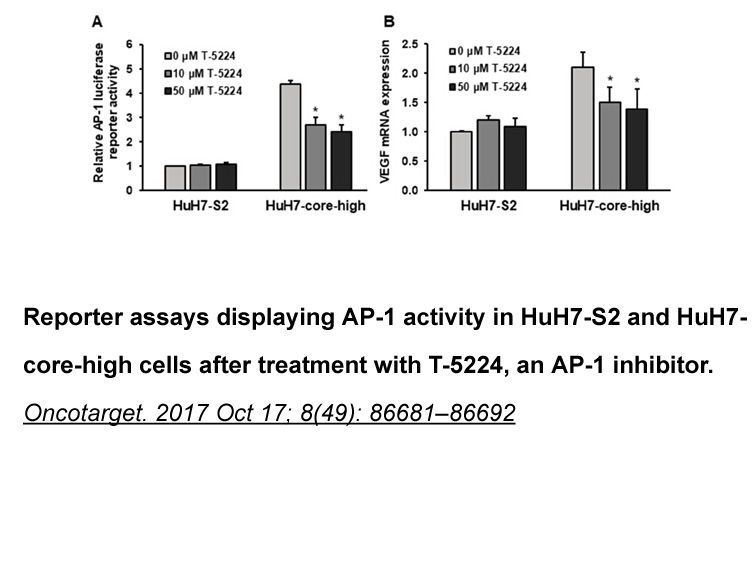
Currently, ursodeoxycholic RI-1 (UDCA) is the only recommended and widely used drug in the treatment of CFLD. However, the clinical efficacy of UDCA is controversial. The most recent Cochrane review only identified a small number of trials assessing the effectiveness of UDCA [92]. The authors concl
-
br Specificity of CD T cells and their role in
2022-06-20
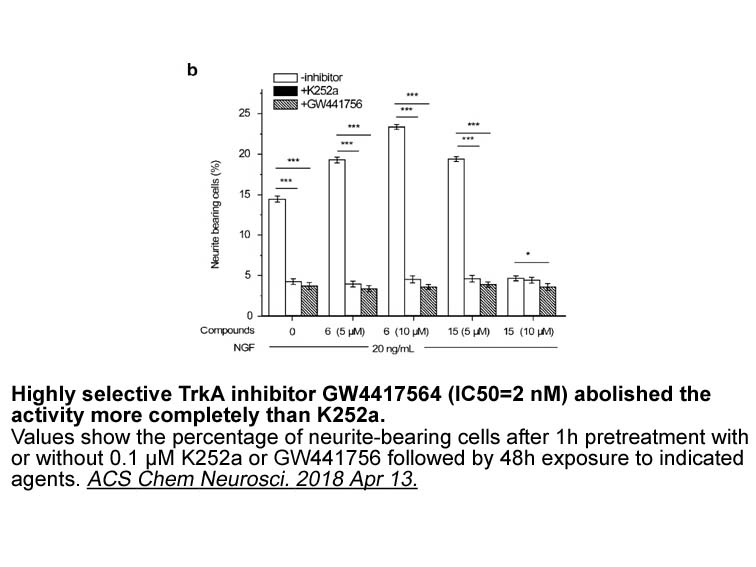
Specificity of CD4 T cells and their role in flavivirus neutralizing antibody responses CD4 T cells recognize peptides that are proteolytically processed from protein antigens and presented by MHC class II molecules on the surface of specialized antigen-presenting cells, such as dendritic cells o
-
Previous studies have shown that zinc
2022-06-20

Previous studies have shown that zinc interacts with other allosteric modulators at the glycine receptor (Kirson et al., 2013, McCracken et al., 2010, McCracken et al., 2013). Of note, the chelation of zinc via tricine decreases the effects of alcohol at α1-, α2-, and α3-containing glycine receptors
-
In type diabetic subjects with
2022-06-20
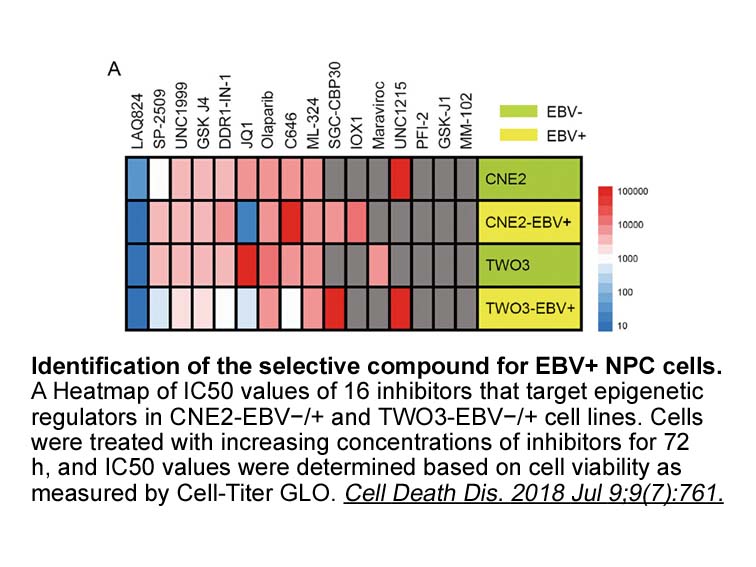
In type-2 diabetic subjects with mean baseline glycated hemoglobin A (HbA) of 8.4%, q.d. administration of MK-0893 for 12weeks as a monotherapy resulted in dose-dependent decreases in HbA and FPG. Administration of MK-0893 q.d. at doses of 20, 40, 60, and 80mg led to observed reductions in HbA of 0.
-
It is widely acknowledged that CpG methylation
2022-06-18
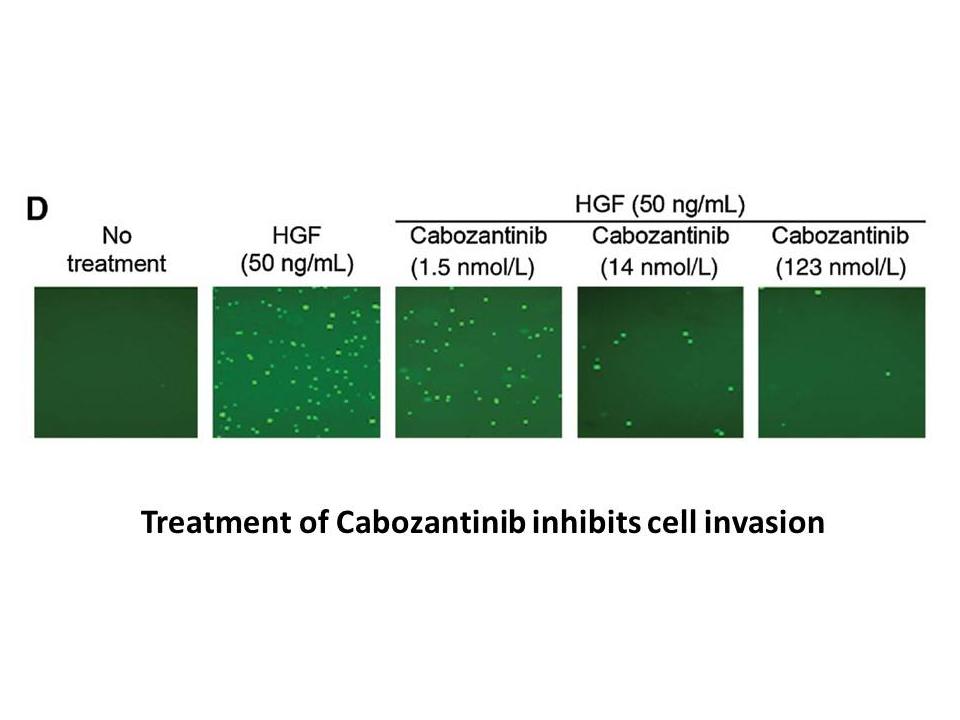
It is widely acknowledged that CpG methylation of the promoter regions of some genes plays an important regulatory role in transcriptional regulation and in the establishment and maintenance of cell type-specific gene expression (Li, 2002, Jaenisch and Bird, 2003). This study obtained multiple lines
-
Glucocorticoid is a major regulator
2022-06-18
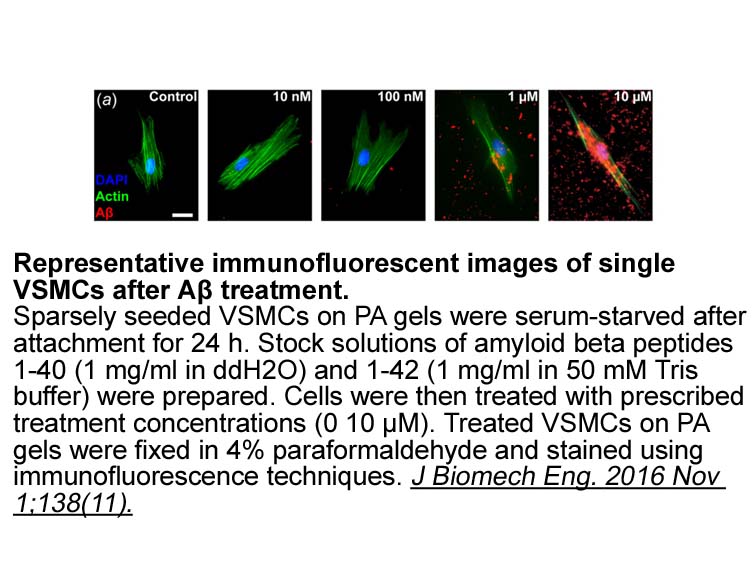
Glucocorticoid is a major regulator of body's response to stress (Armario, 2006). Repeated injections of the glucocorticoid corticosterone (CORT) in mice have been shown to produce an animal model of depression (Zhao et al., 2008). Further study of this phenomenon suggested that prolonged CORT expos
-
br Acknowledgements We apologize to our distinguished
2022-06-18
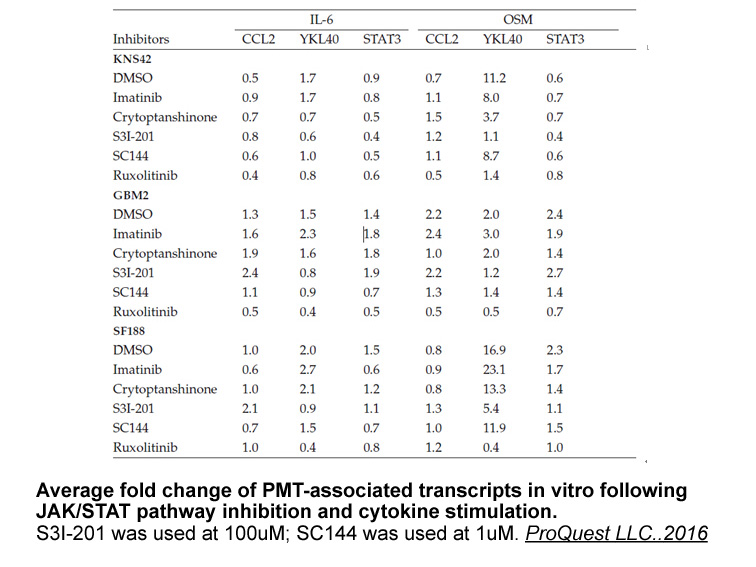
Acknowledgements We apologize to our distinguished colleagues whose work has not been cited owing to space limitations. This work was funded by the Italian Association for Cancer Research (AIRC, Milan, Italy, IG 14732 to A.M.); Italian Ministry of University and Education (Finanziamenti per la Ri
-
On correlating acute rejection to different risk markers by
2022-06-18
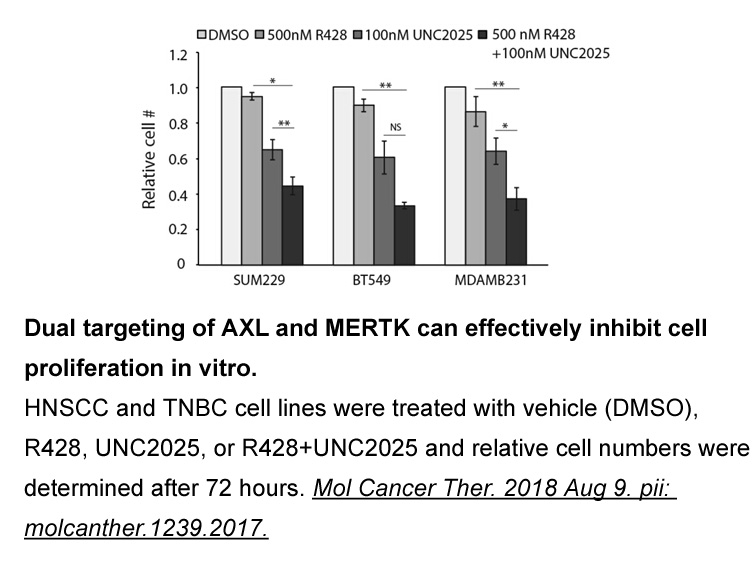
On correlating acute rejection to different risk markers by multiple linear regression analysis, we found that serum FasL and serum creatinine were variables that were independently associated with AR. Carstens et al., reported that significant differences were present between acute rejection and ze
-
br Experimental procedures br Results Hdc
2022-06-18
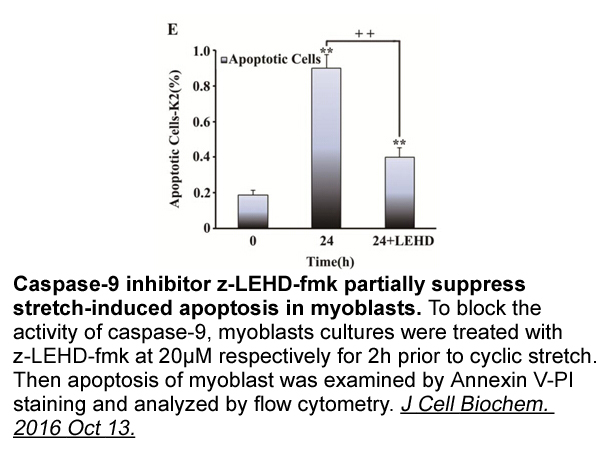
Experimental procedures Results Hdc-KO mice show basal activation of the MAPK and AKT/GSK3β pathways in the dorsal striatum (Rapanelli et al., 2014). These signaling pathways are differentially regulated by the H3 receptor in dMSNs and iMSNs in wild-type mice (Rapanelli et al., 2016). To bette
-
Apigenin trihydroxyflavone a natural plant flavone is
2022-06-18
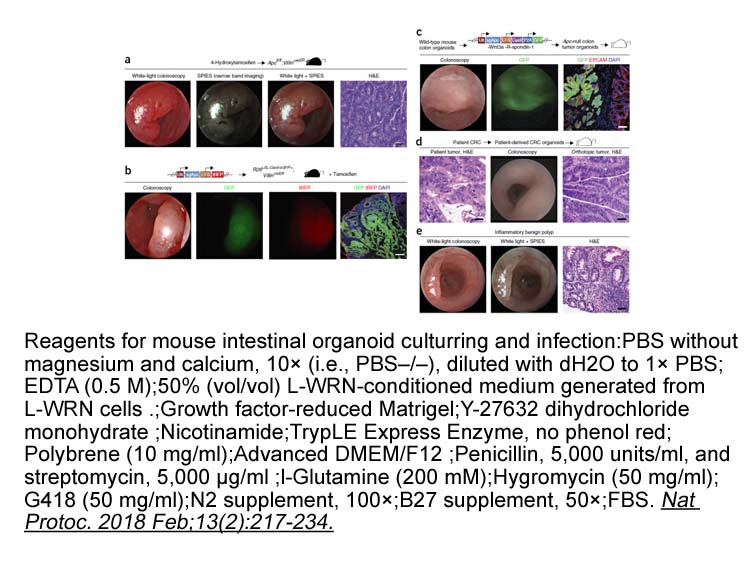
Apigenin (4′, 5, 7-trihydroxyflavone), a natural plant flavone, is a bioactive compound present in a variety of fruits, vegetables, and medicinal plants, and its various beneficial biological activities have been reviewed (Zhou et al., 2017), including HIF-1α inhibition-mediated anti-tumor. Recently
-
Ultimately the change of maturation ratio of
2022-06-18
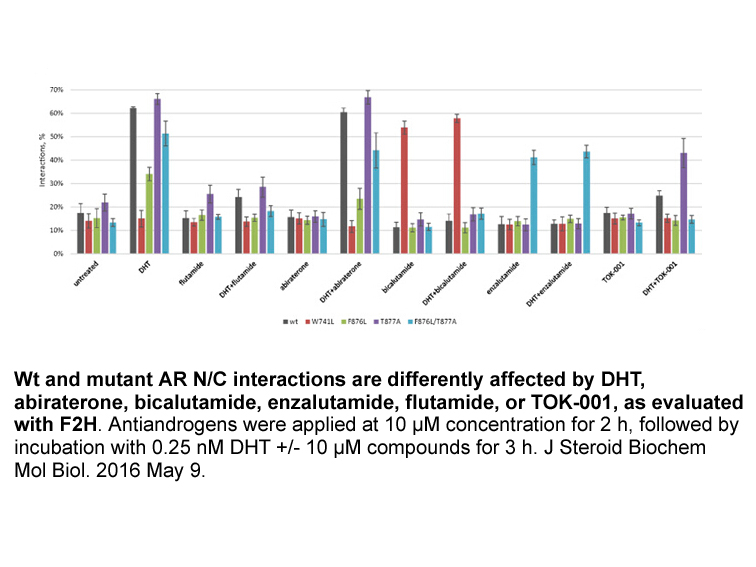
Ultimately, the change of maturation ratio of the Leydig cell caused reducing of INSL3 expression undoubtedly. INSL3 (insulin-like 3) is a hormone produced mainly in gonadal tissues. It was discovered to participate in development of urogenital tract. The mutations of this gene is one cause of crypt
15918 records 400/1062 page Previous Next First page 上5页 396397398399400 下5页 Last page